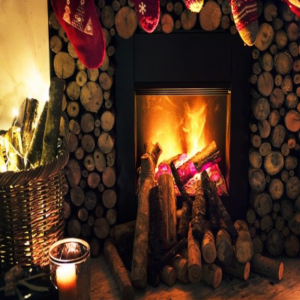Firewood – Understanding Fuel Values

Hardwoods and Softwoods
Firewood is a popular choice for home heating due to its environmental benefits and low cost. There are many aspects of firewood that are unknown or misunderstood by the public so hopefully this post will be useful in that regard.
In getting the most usable heat from wood, the species of wood you burn is not as important as how long the wood has been seasoned and the efficiency of your wood-burning unit. However, some species of wood are preferred because of their highly density, ability to dry faster, and their ability to split easier.
Softwoods, such as pine, are very resinous. This allows them to be easily lighted and rapidly burn with a hot flame. Their low densities, though, mean they burn quickly. So, you need more volume of softwood firewood to yield the same heat as you would from other species.
Hardwoods are generally more difficult to ignite and burn less vigorously and with a shorter flame. However, they last longer and produce more coals than softwoods. Oak and hickory, for example, are high density hardwoods that produce uniform flames and steady, glowing coals.
Fuel Value Variables
The fuel value of wood depends on the wood species, density, resin content, and moisture content. We will talk later about proper stacking. This is important because improper stacking will result in decay which will reduce the density of the firewood and lower its fuel value. It should be noted that any wood will burn but high density hardwoods, if properly dried, will yield the best heat.
Wood density and resin content will widely vary among species. However, the moisture content of firewood is determined by the season in which the tree is cut and how the wood is to be seasoned and stored.
An excess of moisture in wood greatly reduces its fuel value. The amount of water in wood is usually expressed as a percentage of the wood’s weight when it is ovendry. The moisture percentage is called moisture content. The weight of the water in the green wood from some species is equal to the weight of the wood itself when the wood is oven dry. These species would have 100 percent or greater moisture content.
Firewood should be dried and seasoned, but it is not practical to use kiln drying. The heat value you would gain in the wood would not repay the cost of the drying. Solar kiln drying is an exception to this rule. In generally, air drying wood for 3 to 6 months will reduce the moisture content by about 30 percent. If you air dry it for an additional 6 to 9 months and protect it from the weather by putting it under a storage shed or Visqueen, you can reduce the moisture content to 12 percent.
Burning wet or green wood is uneconomical. Too much heat must go to evaporating the moisture so the wood can burn. Also, excess moisture adds to the creosote buildup in your chimney.
Importance of Moisture Content
On the average, 1 pound of bone-dry hardwood contains about 8,600 Btu’s (British thermal units) of heat, and 1 pound of bark has 7,500 Btu’s. A Btu is the amount of heat needed to raise the temperature of 1 pound of water 1 degree Fahrenheit.
As it is burned, wood that has been stored outside at an average temperature of 40 F, will lose about 1,380 Btu’s for each pound of water it contains. One pound of firewood with a 30 percent moisture content contains about 0.3 pounds of water and 0.7 pounds of dry wood. Note, wood density will vary these numbers among species. Thus, it would lose 414 Btu’s (0.3 x 1,380) to drive out the water and lose 2,580 Btu’s (0.3 x 8,600) because of the lost space in the wood that the water occupied. From that 1 pound of hardwood, then you will only get 5,606 Btu’s of possible heat. The same procedure shows that you get about 4,836 Btu’s of possible heat from a pound of bark with a 30 percent moisture content.
All of this means that the moisture content of firewood is significant. Proper seasoning and storage can increase the amount of available heat in your firewood.
Because the weight of firewood at various moisture contents is difficult to determine at home, the available heat per standard core is a more meaningful value. Table 1 lists the Btu’s of heat in wood and bark for a standard cord. Remember, the Btu values are potential values. The efficiency of your wood burning unit will determine the quantity of heat captured and used.
Pine is not listed in Table 1 because it produces excessive creosote deposits in chimneys and stove pipes, and most manufacturers do not recommend burning it in wood stoves. Pine produces about 9,000 Btu’s per pound of wood, but a cord of pine has fewer pounds in it than a cord of most any hardwood.

Meet the Author
Dr. Todd Shupe is the President of Wood Science Consulting, LLC. He is a well-recognized expert on wood forensics, wood preservation, wood decay and degradation, and wood species identification. He has a broad background in new product development, quality management, and marketing and sales in both the public and private sectors. For more information please visit DrToddShupe.com.
We welcome your comments below.
Thank you for visiting. We trust that you have enjoyed reading our articles.
Liked this post? Read more below or search for more topics . . .

